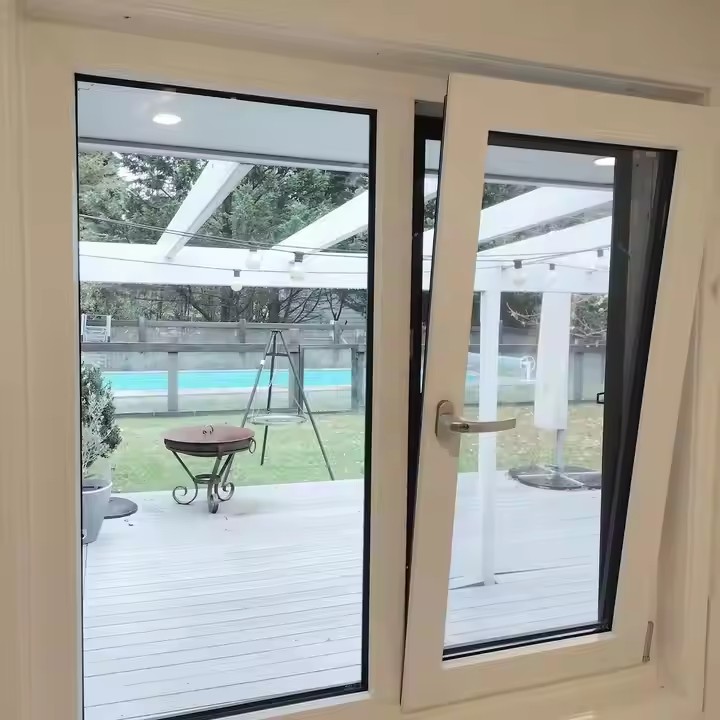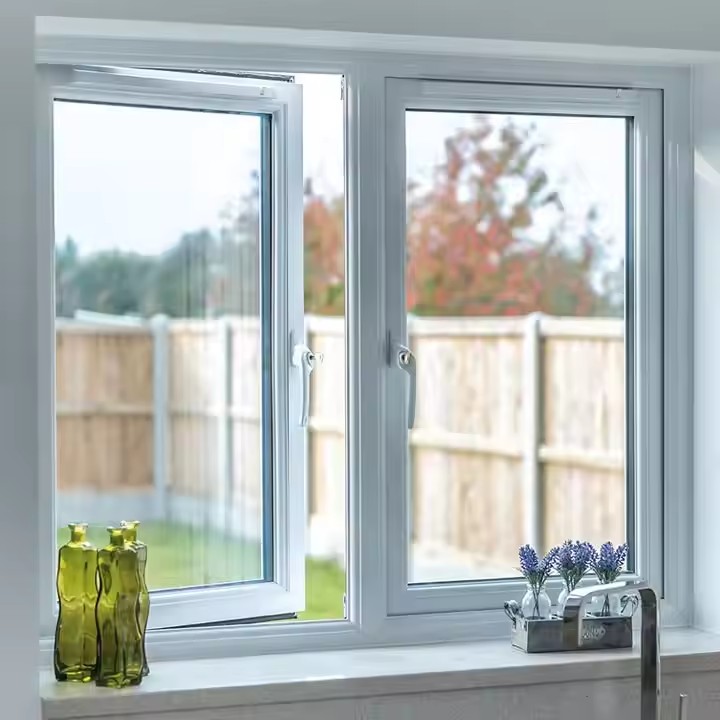- Wind and Pressure Resistance: Coping with Extreme Weather
Australia is a windy country, especially in coastal areas like Sydney and Melbourne, which often experience strong winds and thunderstorms. Some regions, such as Queensland, are also prone to tropical cyclones. Therefore, wind pressure resistance is a top priority for folding doors.
Structural Strength: High-quality folding doors must use high-strength profiles (e.g., 6061-T6 aluminum alloy) with frame wall thickness ≥1.8mm. Hinges and tracks should meet Australian Standard AS/NZS 4420 (Performance of Windows and Doors under Wind Pressure) to ensure the door won’t deform or leak under winds exceeding Beaufort scale 10.
Sealing Design: The frame and panels should be equipped with multiple EPDM sealing strips, and drainage channels should be integrated into the bottom tracks to prevent water ingress during storms. In Queensland, for example, folding doors for coastal homes are often required to meet “cyclone-rated” standards, including simulated heavy rain tests (≥100mm/h) with no leakage.

- Thermal Insulation and Energy Efficiency: Adapting to Climate Variations
Australia has diverse climate zones: the north (e.g., Darwin) is tropical with hot, rainy summers, while the south (e.g., Melbourne) is temperate with cold, windy winters. Folding doors must provide effective thermal insulation to reduce air-conditioning costs — especially since electricity is expensive in Australia.
Glass Configuration: The mainstream choice is double-glazed Low-E glass, while high-end projects may use triple glazing. Low-E coatings reflect infrared rays — reducing heat gain in summer and retaining warmth in winter. The thermal transmittance (U-value) should be ≤3.0 W/(m²·K) to comply with the National Construction Code (NCC).
Thermal Break Strips: Frames should incorporate PA66 nylon thermal breaks (not standard PVC) to block heat conduction and form a “thermal bridge break.” In South Australia, thermal breaks are typically ≥24mm wide to cope with sub-zero winter temperatures.
- UV Protection and Sun Control: Preserving the Interior
Australia has one of the highest UV radiation levels in the world due to a thinner ozone layer — especially intense between 10 a.m. and 3 p.m. during summer. Folding doors must include sun protection to prevent furniture and flooring from fading and aging.
Glass Sun Control Treatments: Common solutions include “solar control Low-E glass” or laminated glass with PVB interlayers, which can block 40–60% of UV rays while maintaining 50–70% visible light transmission. Some households also opt for built-in adjustable blinds to control sunlight.
Weather-Resistant Coatings: Door panels should feature fluorocarbon or powder coatings (≥60μm thick) to resist UV degradation. Coatings must pass QUV aging tests (simulating 5 years of sun exposure), with ΔE color change ≤3 to meet Australian standards.
- Wide Openings and Indoor-Outdoor Integration: Supporting Lifestyle Needs
Australians value outdoor living — patios and courtyards are standard in residential homes. Folding doors should deliver a “disappear when opened” effect, seamlessly connecting indoor and outdoor spaces.
Opening Width: Standard panel widths range from 800–1200mm, forming large opening spans of 6–12 meters (e.g., 4-panel or 6-panel systems). Top-hung track designs are preferred to avoid floor obstructions, improving safety and allowing robot vacuums to pass through.
Smooth & Quiet Operation: Hinges should be made of 304 stainless steel, paired with nylon rollers (load-bearing ≥80kg each) to ensure operating force ≤50N (easy to open with one hand) and noise levels ≤40 dB (quiet enough not to disturb indoor rest). In Melbourne, many villas use “bottomless track” folding doors with concealed tracks in the ceiling or recessed floor channels for a cleaner appearance.
- Security and Anti-Burglary: Meeting Residential Safety Needs
Some areas in Australia have burglary risks, so folding doors must balance aesthetics with security.
Lock Systems: Standard setup includes multi-point locks (at least 3 locking points). Cylinders must meet AS 4145.2 (Australian anti-burglary standards) with a resistance time ≥5 minutes. High-end models may include fingerprint or app-controlled smart locks for remote monitoring.
Glass Safety: Tempered or laminated tempered glass is preferred. Tempered glass shatters into blunt particles, while laminated glass remains intact even when broken. Impact resistance must pass AS/NZS 2208 tests (e.g., 10kg steel ball dropped from 1 meter). Folding doors near children’s rooms should include anti-pinch features, such as corner cushions or buffer strips.

- Insect Protection and Ventilation: Coping with Natural Conditions
Australia’s summer season brings abundant mosquitoes and flies, with termite issues in some areas. Folding doors must incorporate insect prevention features.
Retractable Screens: Sliding retractable mesh screens made of fiberglass or stainless steel are commonly used. Mesh density ≥16 mesh/inch allows airflow while keeping insects out. The screen can be fully retracted into the frame for a clean appearance.
Termite Treatment: For wooden-framed folding doors (mostly high-end custom), ACQ preservative treatment is required to comply with AS 3660.1 (Australian termite protection standard), preventing timber decay from termite damage.

